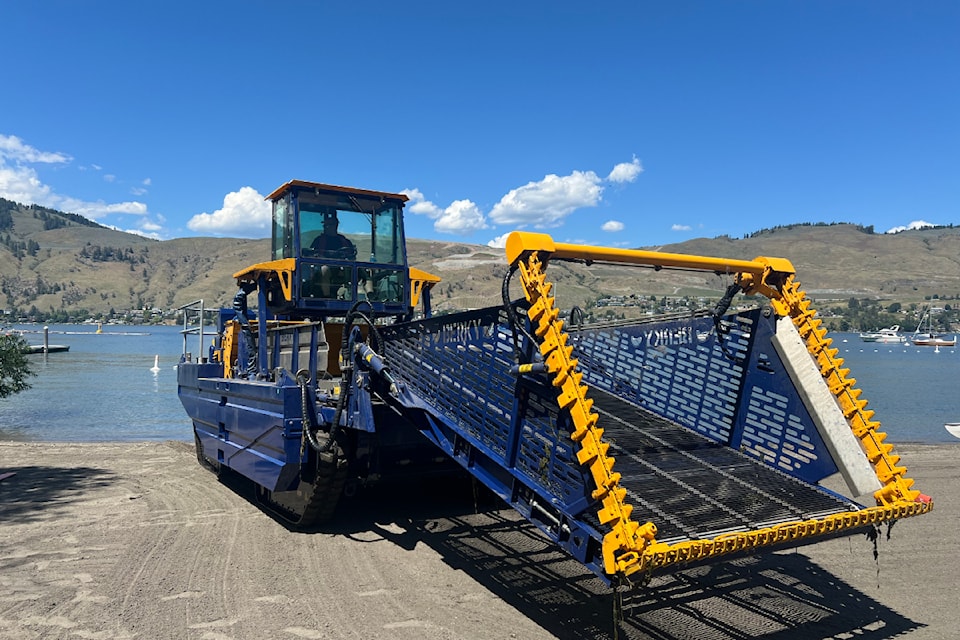The first amphibious milfoil harvester in North America is getting to work ridding the invasive weeds from Okanagan lakes.
Members of the Okanagan Basin Water Board (OBWB) met with the public at Paddlewheel Park in Vernon Thursday to unveil the brand-new, German-engineered, $680,000 machine, which effortlessly came out of the water for a demonstration of its functions.
James Littley, deputy administrator for the OBWB, said the new harvester is expected to last 35 to 40 years.
The new machine will replace one of the OBWB's two old harvesters that were built in 1978. The machine that's been taken out of service will be used for parts to keep the other old machine running.
Littley said the new harvester comes with many improvements over the old one.
"The main improvement is that it's amphibious, so it can drive itself in and out of the water, it can launch itself, and it can bring weeds to where they can be collected," Littley said, adding the weeds are donated as compost once harvested.
Other improvements include the engine mounted in the hull, making the machine quieter. It's also a more efficient engine that produces less emissions.
The machine's purpose of getting rid of the invasive Eurasian milfoil weed is important for a number of reasons.
Littley said milfoil — which entered Okanagan waters in the 1970s — out-competes native plants, taking up all the oxygen in the water and creating "anoxic conditions that change the habitat and also create conditions where fish can swim into it and suffocate," particularly native salmon that the OBWB is trying to restore.
"Just from an ecosystem perspective, it's a really bad weed," Littley said.
From a recreational perspective, the weed has been attributed to several drowning incidents, as Littley said it can lead to tangling and panic when swimmers come in contact with it. It can also tangle boat motors, and when it washes ashore and rots, it can make beaches undesirable, leading to tourism losses.
Littley added that one study found that dense milfoil growth can lower property values by as much as 19 per cent.
"Because of this (harvesting) program, we have beautiful beaches here in the Okanagan," he said.
OKIB executive director Anna Warwick Sears said the harvester is better than alternatives to getting rid of milfoil, and took aim at the federal government for recently approving an aquatic herbicide.
"There are a lot of salesmen and some regulators who are trying to encourage us to use herbicide in our drinking water and the Okanagan Basin Water Board is absolutely against that," Warwick Sears said. "So we are moving forward with new technology in mechanical removal and they can use that herbicide somewhere else."
The launch of the harvester in Paddlewheel Park was a chance for the public to get an up-close view of the machine. It was also a chance for them to submit suggested names for the harvester, as the OBWB is looking to give the machine a more creative name than the rest of its fleet.
Littley said the entire $680,000 price tag for the harvester was covered by the OBWB.
The Water Board does milfoil control in Okanagan, Kalamalka, Wood, Skaha, Vaseux, and Osoyoos lakes.

